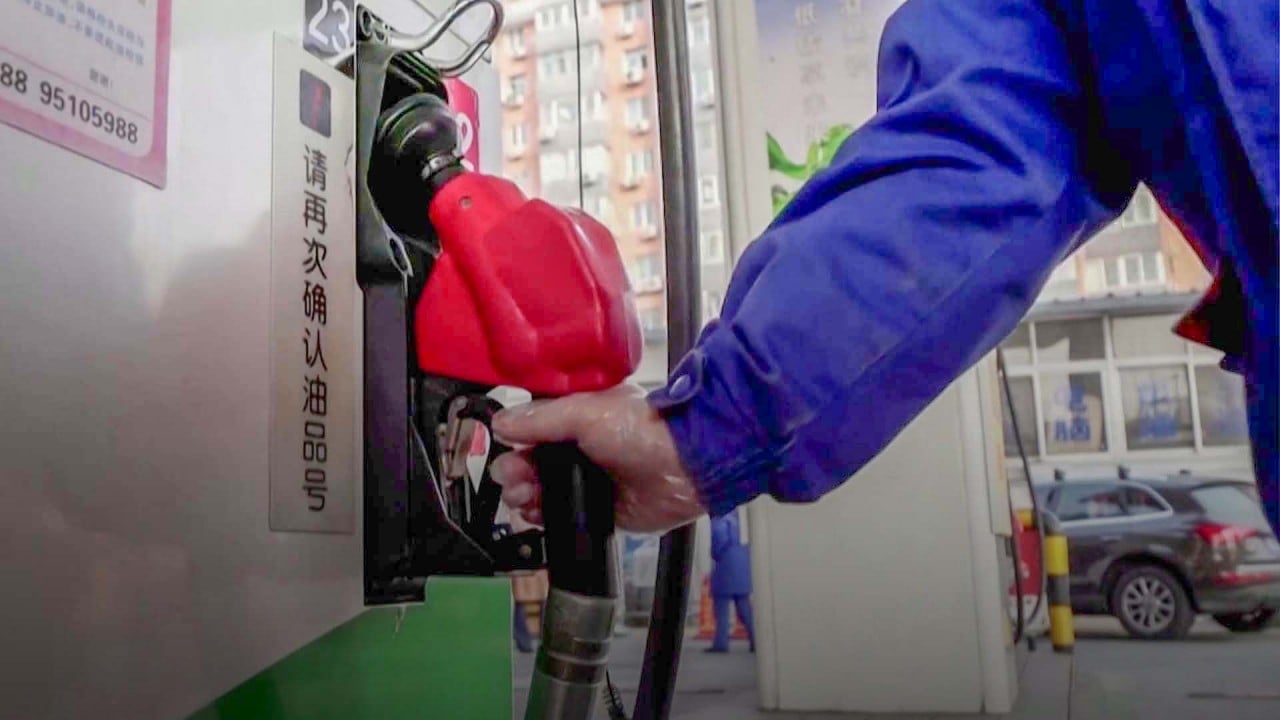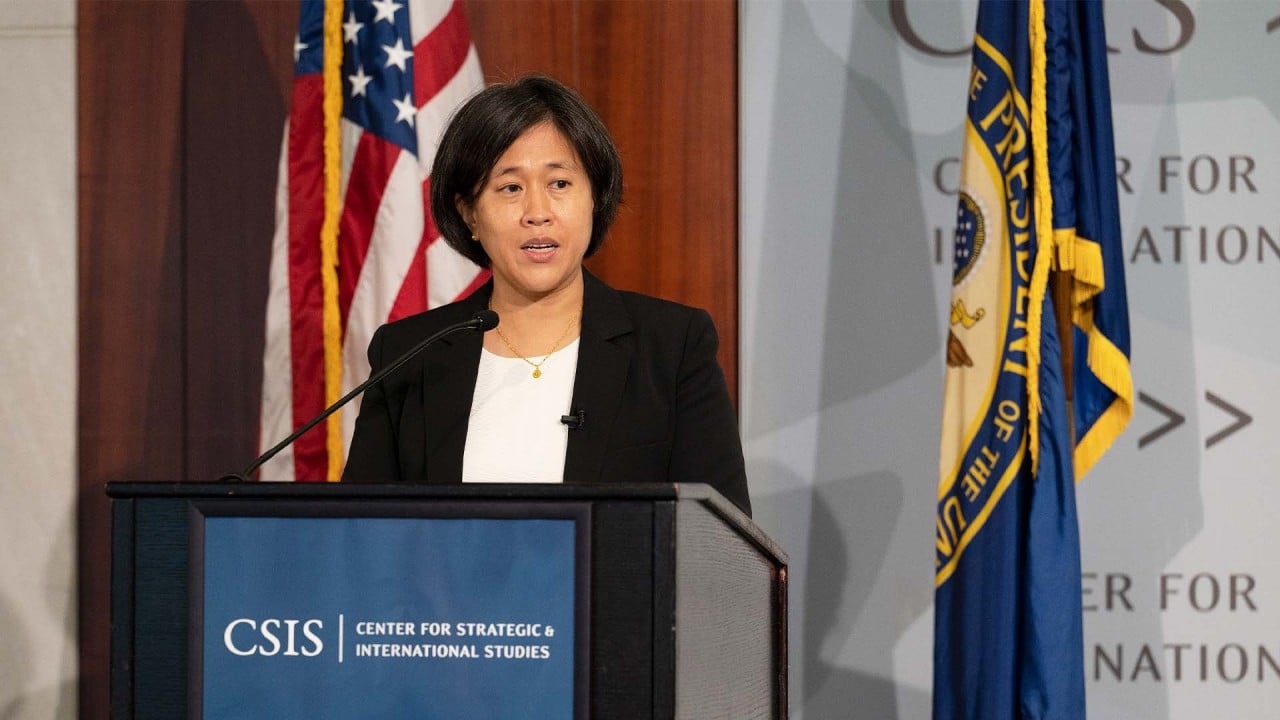
With US-China trade deal set to expire, insiders reveal what’s really happening behind the scenes
- Chinese sources say trade talks between Washington and Beijing occur more frequently than authorities have revealed, while neither politics nor supply-chain disruptions are determining factors behind China’s lagging purchases
- Beijing allegedly vowed before last month’s Xi-Biden summit to ‘buy whatever the US can ship over’
With the phase-one trade deal between the world’s two largest economies due to expire at year’s end, Chinese scholars say supply-side issues are an impediment to China’s ability to meet purchasing targets.
But for now, China continues to lag behind in its commitment to buy at least US$200 billion worth of additional American goods and services, relative to the 2017 level, including US$162.1 billion worth of physical goods.
China’s total purchases of US goods from January 2020 to October 2021 reached only 60 per cent of the pledged total, according to a report by the Peterson Institute for International Economics (PIIE).
US-China phase-one trade deal gets a reality check after nearly two years
In the past two years, economical consideration has always overridden politics as the major driving factor for Chinese purchases, economists from both sides said.
For some products, China is more than willing to use its state power to stockpile amid volatility in the commodities market. But for others, China simply does not need, or is unwilling to buy, so much.
Logistics disruptions
It was clear from the beginning that the target was far from realistic, after taking both supply and demand into consideration, said He Weiwen, former economic and commercial counsellor at the Chinese consulates in New York and San Francisco.
“First, China doesn’t need that many goods in just two years. Second, the United States cannot supply so much stuff in two years,” said He, who now specialises in US-China business relations.
Initially, it was the pandemic that took a toll on supply and demand. But this year, global logistics disruptions have further convinced Chinese experts that supply-side obstacles are to blame.
Lu Xiang, a US-China expert at the Chinese Academy of Social Sciences (CASS), surveyed Chinese shipping companies in recent months. They said the containers they used to transport goods to the US this year have mostly returned empty.
“There is not much cargo at US ports to send to us, so the ships have to come back empty,” Lu said. “This is a very real problem.”
China says cooperation on global trade key to post-pandemic recovery
Normally, 55 to 60 per cent of the containers aboard US-to-Asia backhaul ships are empty, and the rest are loaded with exports, but that number has increased to about 75-80 per cent, according to Judah Levine, head of research at Freightos.
And the main reason, Levine said, is the huge discrepancy between prices, depending on the direction the goods are heading.
Due to massive demand for Chinese products, Asia-US west coast shipping prices soared to US$26,000 per 40-foot container in the third quarter of this year – 20 times more expensive than the reverse trip at the time. Prices have since cooled down a bit, but the price of the eastbound transpacific route to the US west coast is still around 17 times higher than that of the return trip.
“Loaded US export containers not only take longer to load on a ship [than it takes for empty containers], but also, carriers would have to wait for that loaded container to reach its final destination in Asia, get unloaded and be returned to the port before it could be used once again at the extremely lucrative Asia-US rate,” Levine explained. “As a result, there were instances of US export container bookings getting delayed or cancelled in favour of empty returns.”
Energy supply amid global shortage
Many of the major products that China imports from the US have been less affected by container-shipping disruptions, as they are transported by other types of vessels. These goods include energy products.
US energy exports to China performed the worst among the three goods sectors – energy, manufacturing and agriculture – specified in the deal, even though purchasing levels for all have increased considerably over 2017 levels. PIIE data shows that China’s purchases of energy products reached only 37 per cent of the phase-one target as of October, based on US exports.
Among the US$67.7 billion purchasing commitment for energy products, the major component, accounting for almost 60 per cent of the total, is crude oil. But as of October, China had purchased only 34 per cent of the crude oil target, according to the PIIE.
The achievement has been restrained from both the supply side and demand side in the past two years amid the roller-coastering price, experts say.
‘Worst yet to come’ for China’s economy, key data to show further slowdown
Even before the deal went into effect, Bloomberg reported that the US energy industry indicated that it had insufficient production capacity to meet the target.
Meanwhile, the US’ annual oil production has remained below 2019 levels, with investors remaining cautious about expanding production, partly due to poor returns on investment before 2020, and also because of increasing pressure to become more carbon neutral.
One element that more fundamentally impacts China’s appetite for US crude is China’s refining system, according to Sophie Fenglei Shi, director of oil markets at IHS Markit.
Crude oil that the US exports to other countries is of light-sweet grades, while Chinese refineries are designed to process much heavier and sourer types, which are usually from the Middle East. “Sweet” crude contains very low levels of sulphur, while “sour” crude contains as much as 2 per cent sulphur.
“Complicating matters, China’s demand for heavier and sourer grades is only expected to rise, with almost all of China’s major refining-capacity additions designed to run on such grades,” Shi said.
This inherent mismatch adds to the difficulty of reaching win-win deals, she added.
“It would be difficult for China’s refining system to absorb a significant amount of US light grades without making compromises on operational optimisation and refining margins, and it would be hard for US producers and traders to offer discounts for the sake of those compromises as well, as long as there are other buyers in the market whose refining system is more suitable for US crude,” she said.
On the other hand, China’s imports of liquefied natural gas (LNG) from the US have surged in the past two years and are set to exceed the purchasing target, PIIE data shows.
But the contribution is far from enough to fill the void left by crude oil, as LNG is still a small part of the total trade in the energy sector, according to Jenny Nguyen Yang, senior director of Greater China gas, power and energy futures at IHS Markit.
Don’t go home for the Lunar New Year, Chinese workers urged
Stockpiling agricultural products
Serving as a sharp contrast to energy, agriculture has the best-performing sector in US-China trade, with actual purchases reaching 83 per cent of the phase-one target as of October this year, according to the PIIE’s data.
Overseas demand has been so great that American farmers are complaining about how difficult it has been to get their goods out of the country amid logistics disruptions, especially when it comes to products transported by containers.
The shipment of agricultural goods to China has inevitably been affected, but not as much as may have been feared. That’s because major products, including soybeans, are transported in bulk vessels, which have been less affected by port congestion than container ships, the analysts say.
The state would love to increase [grain] reserves. China has the warehouse capacity to accommodate these agricultural products arriving
They also note that China’s incremental purchases of American agricultural products were a key driver in the rise of food-commodity prices in world markets this year. And China’s state-owned enterprises appear to be behind the record purchases.
Lin Guofa, a senior analyst at consultancy Bric Agriculture Group, speculated that China may be interested in buying as much grain as the US can supply.
“The state would love to increase reserves,” Lin said. “China has the warehouse capacity to accommodate these agricultural products arriving, and there were also expectations that food prices would increase this year.”
He also noted that, with a stockpile of critical agricultural reserves, Beijing ensures it has greater control over the market, leading to less volatility that could affect social stability.
‘An eternal task’: China strives to safeguard grain, diversify imports
Manufacturing imports amid weak consumption
“The big shortages for manufacturing are in automobiles and aircraft,” said Chad Bown, a senior fellow at the PIIE. “But those Chinese purchasing shortfalls were already apparent more than a year ago, and dated back to events in 2018 – long before the supply-chain disruptions of 2021.”
Although automobile purchases in China have been recovering from the impact of the coronavirus, the volume of sales is still lower than pre-pandemic, according to Hao Zhou, senior emerging markets economist at Commerzbank.
Semiconductors, however, are another story. Anticipating that the US might cut off the semiconductor supply to China on national security grounds, companies such as Huawei and SMIC stockpiled them over the past two years, Bown said. Thus, semiconductor purchases have already exceeded the phase-one target.
The next step
With the phase-one trade deal due to expire in less than two weeks, formal trade talks may be imminent, but uncertainties and tensions remain in bilateral ties between the world’s two largest economies.
Lu Xiang, from the CASS, said the purchasing part should not be an insurmountable obstacle in negotiations, as both parties are entitled to unconditionally terminate the deal, but neither has exercised that right.
“Since China has not terminated the deal, I don’t think either side should have major disputes on the issue,” Lu said.
He, the former diplomat, said the two sides should adopt an objective and pragmatic attitude to solve their economic and trade issues.
He noted that the purchasing targets are a commitment, rather than an actual trade contract. Also, the agreement clearly states that it follows the World Trade Organization’s non-discrimination principle, which forbids increasing purchases from the US at the cost of other suppliers.
“The key point is, if we extend the deadline by a couple of years, China … is likely to achieve the targets. This type of practise is very normal in negotiating trade deals.”
Additional reporting by Jacob Fromer



